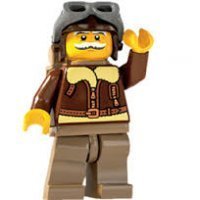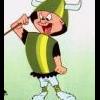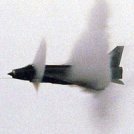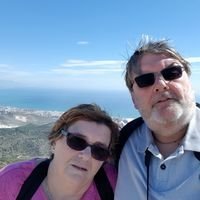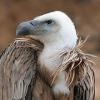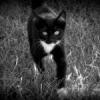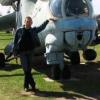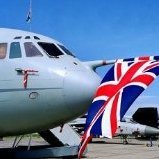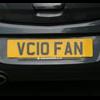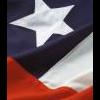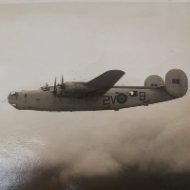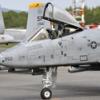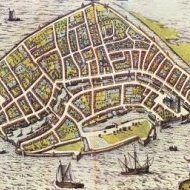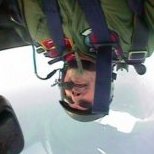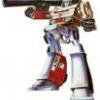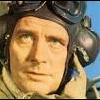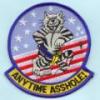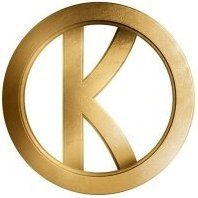Leaderboard
Popular Content
Showing content with the highest reputation on 22/08/21 in all areas
-
The stork-like Henschel 126 as minted by Airfix in their old (1977 original release, according to Scalemates) 1/72 kit. OOB with no corrections (say, to the plank-thickness bomb fin ring), few additions other than tape harnesses and aerial lines from EZ-Line. I thought it looked good in the kit-suggested desert colors.29 points
-
Hello all! I'm posting this on the 80th anniversary of the first flight of a Beaufort Mk.V. This was also the first airplane assembled on the site where I now work. The plan had been to get some photos in the original factory (which is still standing but full of Boeing 787 flaps), but COVID had other ideas here in Melbourne. Here are some details Kit: Airfix Beaufort Mk.I Aftermarket: - HPM Early Beaufort conversion set (minus the extended-chord vertical fin) - Eduard Brassin wheels - Eduard Photoetch set - Eduard masking set Paint: - Topside 1: Gunze H-302 (approx. RAAF Foliage Green) - Topside 2: 10 parts Vallejo 71.323 to 1 part Vallejo 71.105 (approx. RAAF Earth Brown) - Underside: 1 part Vallejo 77.701 to 1 part Gunze H-1 (aluminium dope) - Interior: Tamiya XF-71 (cockpit green) Decals: From the Airfix kit other than T9540 serial (from the HPM set) and black arrow at the port wing root (from the spares box) Other modifications: - Relocated one aerial to the belly - removed gun from rear turret (the first aircraft was unarmed at rollout) - Drilled out bulbs in the wingtip lights - Added EZ-line aerial wire - Added 1940s aerial photo of Fishermens Bend Airfield to the navigator's table And now, photos! I posed a few RAF vehicles and figures around it for a few photos. I wasn't able to take photos in the factory, but some of these are being featured in the local newsletter at work next week and I wanted them to still have an interesting background. I know they're not prototypical! Here's the real thing rolling out of the factory. I tried to match the angles of the propellers. Finally, here's the WIP for those interested. Now, on to finishing the first Aussie Beaufighter!29 points
-
Here in 1/48 scale is the Norman (or NAC) Fieldmaster a 1980’s British cropduster. If ‘Norman’ sounds familiar – you are correct. Here’s a little bit of history courtesy of Wikipedia… “NDN Aircraft, which was set up in 1976 by Desmond Norman, one of the founders of Britten-Norman, the manufacturers of the Islander, to build the Firecracker trainer, designed a new agricultural aircraft. The resulting aircraft, the NDN-6 Fieldmaster was a large single-engined low-winged monoplane with a fixed tricycle undercarriage, powered by a Pratt & Whitney Canada PT6 turboprop engine” “The first prototype flew on 17 December 1981 at NDN's airfield at Sandown, Isle of Wight. TNDN moved the premises to Cardiff, Wales in 1985, renaming itself the Norman Aeroplane Company (NAC). Production finally started in 1987” “NAC went into receivership in 1988, after the production of six Fieldmasters, including the prototype. Brooklands Aerospace attempted to continue production, rebuilding one of the Fieldmasters with a more powerful engine as a specialised firefighting aircraft as the Firemaster 65” The scheme in the model is G-NACL (NACL = Norman Aeroplane Company) which undertook a sales tour of Australia in 1988. But no sales… The build has been tracked over in the Work in Progress forum. Just for a size comparison - here she is alongside an Airfix 1/48 Tiger Moth cropduster. The Fieldmaster (WS = 53ft 3", L=36ft 2") is actually bigger than a Britten-Norman Islander (WS=49ft, L=35ft 7")28 points
-
Evening folk's,dug out another box of old build's for a clean up and the odd repair so here's four I didn't bin in a recent clearout I'll keep these as they are some of my favourite aircraft and yes that includes the Attacker!All in 1/48 scale.28 points
-
Hi All Here is my latest aircraft build. It is Special Hobby's Siebel Si 204D. It is a typical Special Hobby kit except that it features alignment pins! Mind you most broke off in the locating holes when I test fitted the fuselage together. The only problem I had was getting the dihedral on the wings correct as they were a bad fit with much sanding of the locating tabs and slots. I thought I would have a problem with the cockpit transparency as I read that some found that it was wider than the fuselage and needed bending and heating but mine fit with just a little persuasion with several strips of thin Tamiya Tape. The circular front piece fitted on with no problems. Thanks for looking Mick26 points
-
Knocked out a nice simple Tamiya kit in lockdown just to get something finished. It's in 1/72, with the plastic straight from the box and Eaglecals used for the markings, although I did not use the white stripe decals. Much easier to actually paint them on using 1mm kabuki tape. Eventually I'll do the other 3 to sit beside her.25 points
-
Hi Guys, this is my last project. Avro Lancaster in scale 1:72 Airfix. The aircraft I tried to reproduce in scale was the "S for Sugar" No 467 Squadron Royal Australian Air Force ,Royal Air Force Waddington, Lincolnshire 1944. The model has been very well designed by Airfix and it didn't present any particular issue for a young modeller like me. I completed the item with seatbelts and a few bombs after market (the Airfix ground crew was not considered since I didn't want to build a diorama). The model was hand painted. I tried some dirty effects on the undercarriage with oil colours and using Tamiya master weathering for the engine exhausts. I hope you like it and as always I cannot wait to receive your comments. Thanks21 points
-
thanks Bill, Hitc I really like their paints and have been in the process of gradually switching over from MM/Testors, but if they can't correct something as basic as that (and they have been informed), then I think I shall have to look elsewhere. Luckily, I had 163 in my paint rack Bill - thanks for the heads up Ah... old Ivor. Genius. I've just reminded myself why I dislike enamels so much. It's taken me 3 days to paint something I could normally have covered in one session. Mr Aqueous COlor didn't leave me many options this time around though thanks Giorgio. You might want to sit down for this episode Ehhrrr... both. You can't get decent sausage meat in this area. I make a large batch, fill the loaf tin for the lorne, and what's left over makes up a couple of good sized sausage rolls. I know I should have a go at making my own sausages, but I'm too lazy and don't have the proper equipment. Can't use Imperial gr*y anymore Pete - I thought we'd gone metric? But it sure makes a tempting grab handle to swing from when clambering into the cockpit. What a week that was. Not the best of weeks and not one I'd like to see repeated anytime soon. We do have some progress though. Lots of progress on some fronts, and not so much on others. I'll begin with the easy stuff. Wheels got painted. The tread shows up just enough to be seen which is great. I had been thinking it was too fine to print but these have turned out well. MM Dark Green, with Mr Color Tire black, and a dab of Mr Color Bronze (I think) for the greasy nuts. The bronze does a great job of making the nuts look greasy, and with the additional benefit that you don't have to be neat when you paint it on, I mean whoever heard of nice and neat greasy nuts? I've printed off a squadrons worth of wheels - just because the printer was running and I had space on the build plate. These are all sitting with a Flory wash, so I'll choose the best ones to go on the WW, and the rest.. dunno yet. I do know that I'm not building any more Whirlwinds, but they may find a home elsewhere. Paint was also spilled on the hoist. That stainless wire has since been blackened, I also spent some time on the main rotor blades this week, trying a few things to see if I could reverse the droop. I guess that would be a poord then? Anyway I tried manually flexing them, leaving them flexed with weights on them, and heating them up, even trying clamping them to some heated aluminum, but wasn't happy with the results. i.e., I got no poord worth talking about. I also looked at making them from scratch, with laminating sheets of various thicknesses together, but I think I am going to print them instead. I know I said I was going to avoid printing, and for the most part, I have kept to that, but sometimes, you just have do do what a modelers got to do. A job I hadn't been looking forward to was trimming the sliding windows from the vacforms of the other week. As it turned out, it wasn't too bad. I tried trimming the "frame" from some of the white styrene windows I had formed but everything ended up way to flimsy to use, so I'll end up just painting the frames on these after they've been dipped in the make it clearer stuff Onetask looming up soon will be fitting the undercarriage in place. On one u/c leg there is an electrical box. Take a thick piece of plasticard, and glue two thin pieces of plasticard to each side of it That can then be trimmed down to electrical box size. Leaving a small tab of the thin sheet on either side allows it to grab onto the leg and stay in place, though it will be glued when the time comes to actually fit it. Stick a couple of round things on the front and the electrical box is almost complete. I may attempt the wiring when it's fitted - not quite sure yet. Has anyone else ever experienced something like this? My Alclad Aqua Clear gloss has turned a distinct shade of blue. Now, I've only ever used clean (new) pipettes to take gloss out of this to transfer to the airbrush so I think I can rule out contamination. I'm becoming more and more suspect of Alclad products recently, and seriously considering to stop using them. I think I'm just going to bin this as I don't really want to take the chance that it may work despite being a bit blued. I took a days vacation back on Wednesday as I wanted to get some of yer actual real paint on this thing, at least, paint that wasn't grey. Things didn't go well. It would appear that over time, there were several different camo schemes used on the WW. I figured that out all by myself after spending hours trying to reconcile the markings shown on the port and starboard sides of my references. I only have one good shot of the port side of a 28 Sqn WW, and none of the starboard side, so was using whatever references I could find. I was surprised at the lack of decent references. Most of these WW's appear to have been painted bright yellow, which really wasn't a lot of use to me. After spending way more hours than I'd care to admit to, I decided that I needed to start again. That Humbrol enamel really sticks to the Alclad primer. It's just a shame that the alclad primer doesn't really want to stick to the whirlwind. Yup, paint lift in several spots. After wasting yet more time trying to figure out the markings, I gave up and changed tack. The rotor head. I still needed to make the swash plate and the non rotating plate. Previously I had started the swash plate in aluminum, but I don't have the skills to wrangle the other complex shapes found in the swash plate, out of aluminum or brass. Back to plastic. I used the circle cutter to cut a small disc, then stuck a piece of runner on top of that, followed by 3 legs of styrene sheets spaced at 120 degree intervals. I used the old kit part to make sure I had the spacings correct'ish Once the glue had set, the legs were trimmed back and filed/sanded/scraped to shape. I think those outriggers are still too long, but I need to wait until I have the pitch change rods attached then I can trim them back. next up was the lower swash plate (?). Another piece of runner with 4 legs this time. 3 legs for the hydraulic rams, and 1 leg for the torque link Shaped as much as I could without it breaking apart and sitting on top of an out of focus MRGB. It's not my best work, but still streets ahead of the kit parts. I should really have just printed the whole darned thing - would have been a lot easier. Then I got fed up with the rotor head and turned to other things. The undercarriage legs got their black gaiters. The MRGB got a coat of interior green and the tail rotor was painted up. I started with painting the tips white, then masked the two white lines. That was oversprayed with red, before another masking, and finally the black. Then I realised that I had completely missed the red band at the blade root, so it was masked up again and the red band added. That band has turned out a bit darker ans it was painted over black, but I wasn't about to start from scratch again. I'm blaming it in sloppy painters in the bay. Yesterday, once again I turned to the detestable job of masking up for the camouflage. Things didn't really go any better this time - it still took hours and I still had trouble reconciling port and starboard demarcations for some reason. In the end I just started making things up, trying to include as much of the 28 Sqn scheme as I could and at some point it morphs into a 60's/70's hybrid scheme. 28 Sqn must be the worst record keepers in the entire RAF At this point I was starting to feel good about the paint job. That was, until I started unmasking. Ouch. followed by another ouch on the tail boom - different from the first ouch on the tail boom. Starboard side went a lot better and the paint didn't fall off I used a mix of DSG and black - since I can no longer get my favorite grimy flat black anymore - to cover her bottom Now I just have to mask off for a nice anti-glare panel on the nose. I'm still calming down from today's adventures so that will have to wait until at least tomorrow. I'm still pondering whether to print the roto head or not. I know I said I wanted to stick to old school type modeling here, but I'm not too enamored with my rotor head attempt so far. Maybe it will look better under paint. note to self. This build is still fun. This build is still fun. This build is still fun.15 points
-
Here is my finished Boeing 777-FB5 in 1/144 scale which has been converted from the Revell B777-300ER kit. Presented in the attractive Korean Air livery sporting registration HL8251. This is the 2nd time I have done this conversion, having previously built my British Airways B777-236(ER). It’s a lovely little conversion and the added bonus is that the freighter version of the B777 uses the same engines and extended wing tips as the B777-300(ER). I did do a WIP post before on how to do this conversion when I built my BA B777. The decals are from Draw Decal and the wing markings are from RichW. Paints used were Ford Riveria Blue from Halfords which I found was a good match for the light blue of Korean Air. Halfords Appliance White for the lower fuselage & nacelles and racking grey for the wings and stabilisers. The ‘silver’ stripe through the fuselage was my own mix of Revell Aqua colours 371 and 90. I opted to paint the silver line first and then mask off the areas for the light blue and white sections. The metals are from Revell’s Aqua range. I enjoyed this build as it made a nice change from the Airliner’s I usually build as it’s the first time I’ve built a freighter model. I am currently working on the new Zvezda B757 kit and a B787-8. Thank you for looking and as always all comments and feedback are greatly appreciated. Regards, Alistair14 points
-
Hello all Another recruit to my rapidly increasing 'brail scale' air force, and this one means more than most as its my favourite aircraft of all time... the English Electric Lightning. This is the fairly old Revell 1/144 kit built completely OOB apart from some Tamiya tape for the seat belts and some brass rod for the pitot tube. Paints were a real mixture as I couldn't seem to get the correct shades I wanted from actual tinned colours. After much trial and error I settled on Xtracrylix 1136 for the medium sea grey (which is actually FS36375), Tamiya XF80 for the barley grey, and Gunze 51 for the light aircraft grey. The trouble with the later low viz Lightnings is that they were so heavily weathered that no two airframes seemed to look the same. Decals were a mix of the spares box and 144th.co.uk (who's Lightning decal sheet is mind blowing by the way) and then some pastels for the weathering. Hope you enjoy, comments much appreciated Inspiration was from this photo from Scale Modelling Now... And here....... https://www.flickr.com/photos/8531201@N04/4794416320/14 points
-
The Airfix 1/48th scale TSR2. No aftermarket used. Cockpits detailed with plastic card, wire, and tape for seat belts. Nose probe replaced with steel tubing. Painted with Tamiya acrylics. Thanks for looking Angelo14 points
-
This was a quick build, pretty much purely to show off the striking Super Scale VFA-97 decals. The old stalwart Monogram Hornet was essentially built out-of-box. Enjoy!14 points
-
This is my latest project, my first proper attempt at weathering a military vehicle. Feedback welcome for hints and suggestions.13 points
-
Hello all, i hope you're all keeping well. While between projects I manged to dive into a quick Hasegawa 190 kit, for some reason these kits are far better IMO and go together better/easier than the Revell versions. I had an EagleCals (EC#79) set sitting about so though id use them on this one and use the rest of sheet on another one later, also added were the gun barrels and pitot tube by Master (AM-32-065) set....plus some canopy masks as i hate masking canopies up :-). Paints as always are Gunze and then lightly weather with oil paints. I will try and get some outdoor and moody shots later on as its not the nicest weather outside right now. Hope you all like it, please feel free to comment or critique.13 points
-
I’ve just finished this, the well-known 1/48 Ford from Tamiya. The only addition is Superscale decals for VMF(AW)-115 - one of the units in the kit’s decals, but much nearer the end of their time flying the Skyray. Well, that and a couple of rudimentary seatbelts, because the cockpit’s surprisingly sparse under that tall canopy. I got aftermarket decals to do something a bit different, and it was a good thing I did, as it turned out the kit’s decals were shot. They looked fine, but when I tried to use one of the walkways I found it just wouldn’t let go of the backing paper. I did without - there seem to have been any number of approaches to walkways, including not having any at all. I’ve not been having a lot of luck with Tamiya decals … but then, I do stow kits for an awfully long time before I get around to them. This one’s a stripling - only 17 years old when I finally built it. The kit itself is pretty good. I came across the same little foibles as just about everyone has found: wing profiles that don’t match either side of the fold, and odd intakes with half a duct leading to an engine face attached to a bulkhead. But you can batter the wings down, and you can barely see into the intakes. My own discovery was that the windscreen wouldn’t sit properly on the nose: there seemed to be a bump at the front that held it away and wouldn’t respond to filing without removing some of the frame. Formula 560 to the rescue! Also, a common feature of kits with automatic slats: it gives you a well to sit them in, instead of the flush fit at the trailing edge. That lets you build it slats-in but isn’t so good slats-out. But the fix is dead easy: a thin fillet of plastic card (or in my case yogurt pot) sanded flush does the job. And you can even leave its forward edge untidy and ragged, as the slat hides it. Other features of the kit are better, like the foolproof fin attachment and the neat handed pins so you don’t mix up the left and right tanks. The basic paint scheme is Halfords Appliance White and Humbrol 129 light gull gray (several coats). I painted the intake lips as I had no confidence whatever that anyone’s decals would work. And overall, I thoroughly enjoyed myself.13 points
-
This is the ICM MiG-25PD dating from 2008, so an earlier generation of kit than this manufacturer’s current excellent range of Foxbats. This is still a good kit and was (I think) the best fighter variant MiG-25 on the market … until ICM announced a new tool MiG-25PD for 2021 just as this build was headed for the spray booth! This older boxing needs an awful lot of fill-sand-repeat to get a good result. I’ve augmented my interceptor Foxbat with a Neomega cockpit (intended for the Condor MiG-25P but a nice set of resin that fits fine), Begemot stencils, Armory exhaust, intake injectors and wheels, a Master pitot probe, and a Pavla canopy. The MLG required a lot of work to get a good fit and there is some extra metal rod in there to give it some strength. I added a couple of Quickboost air scoops to replace those lost in the sanding (the Quickboost set has enough for two models). The main scheme is Ammo MiG FS36375 over a black base, and the metal parts are Vallejo. This was my first time using Ammo MiG paints and I wasn’t wild about the coverage; however, some research indicated that was my fault for using a gloss black base, rather than a matt primer – I've had no problems since, so live and learn! The markings are from the kit for Red 65 of the Ukrainian Air Force in 1995. I did make up some R-40 missiles using those from the Condor kit but, although the results were ok, they were just ok and I quite like the purposeful lines of the Foxbat unencumbered. The weathering is a little harsher than I intended but these birds were fairly grubby by the end of the service careers. All in all, I’m quite pleased with this and am sure that the new mould ICM PD is worth the wait.12 points
-
Hello again. I'm working through some of the old Matchbox 1/76 armour kits that I remember fondly from days of yore, and here is the T-34. This time round I left off the hull fuel tanks and turret MG in an attempt to get it to resemble an early version. Best bit was always the diorama base, and for this one I added a bit of static grass and vegetation. The figure came with the kit, and he's not bad. It was great fun to do, as ever - Jagdpanther next I think! 😀12 points
-
Hi there This post will be all about painting and adding the markings to the rear of this fuselage. I thought that this would be the last post before i actually finish all the work on the fuselage but then I remembered that I had to make the rear crew door! I have made the rear gunners door that I will show you now. Because the door is the shape of the fuselage I had to use the bulk head formers as a template to get the shape right. I made it from plastic card and here is the inside of the door... The out side was then covered in a sheet of aluminum and a handle was made from a piece of sanded plastic sprue... Then I painted the inside of the door with interior green.... I made a couple of hinges from plastic, (covered in pieces of aluminum from a Coca Cola can to strengthen them)... and then dry fitted the completed door to the fuselage. Its now time to paint the markings on the fuselage but first I had to mask up the areas I didn't want the airbrush to cover....for some reason I hate this job of masking ....you miss a bit and the blasted spray gets it!! Before I fired up my Paasche....I spent a LOT of time marking out the USAF Insignia I needed for both sides of the fuselage. This wasn't as easy as I thought as not only did I have to get the scale correct but actually drawing out the insignia meant I had to dabble into geometry....which I totally ignored in my schooling years!....72 degrees spacing for each star point ...the bars are the radius x a half.... etc etc...luckily I found a great little page on the internet explaining how to actually draw the Insignia! I drew the insignia onto some sticky back silver paper I have...which if all goes well I can literally just place them on the fuselage! After drawing another extra insignia , I cut out the star and the bars.....sprayed the original white and then replaced the star and bars over the white as a mask for the dark blue paint!.....did you get all that??? !!! So first off....here are the green bands I sprayed that are on "Fuddy Duddy"... ....and here is the USAF insignia on the starboard side....I have to say I am pleased in how they have turned out!.... The next 6 photos show the overall completed paint scheme for the rear of this B17... It seems such a long time ago that I had the tail wheel in place!... The reason it isn't fixed at the moment is the fact that this whole model has to be transported to USA at some point and the less sticky out bits for packing the better!!...but as a reminder for myself and you guys...here it is.... Well that's it for this week! Next week some time will be the final post of this rear section showing the rear crew door that I have yet to build and a good few photos of the rear section completed! Until then ....take care and thanks for looking in! Cheers Fozzy12 points
-
Hello everybody! My first model of a tank in 1/72 scale. Made it as a gift to a work colleague. Short info. This medium tank was the most numerous in the armored forces of the Wehrmacht and was mass-produced from 1937 to 1945 in various modifications (A-J). A total of 8686 units were produced. This modification was the penultimate and most successful, and also the most massive one. About 3000 units were produced. The weight of the tank is 25.7 tons. The front armor of the building is 80 mm, the stern and sides are 20-30 mm, the forehead of the tower is 50 mm. Armament - 75 mm KwK 40L / 48 cannon, 2nd course. machine gun 7.92 mm MG-34 (87st / 3150 patr). Gasoline engine - Maybach HL 120 TRM (300 HP). Max. highway speed - 38 km / h. The power reserve is 210 km. Crew - 5 people. The assembly of the model was carried out practically without modifications - out of the box, with the exception of some changes. a hole in the gun barrel was drilled added handrail in the stern MG 34 machine gun barrels drilled "from scratch" made lower anti-cumulative screens Painting - enamels AKAN, TAMIYA gloss varnish - FUTURE and matt TAMIYA MIG wash (dark), "pack" - MIG pigments, tinting of "powder box" TAMIYA. Decal F. COLIBRI The German PzKpfw IVAusf is presented. H (Normandy, 1944) Happy viewing!11 points
-
Hello All Just finished this one, literally hot and still wet from the shed (the kit, not me). Cracking kit to make, out of the box other than glue and paint. The resin detail and the vac form canopy are some of the best examples I’ve ever seen. Alas none of you will get to see the cockpit detail as it’s below the tiny cockpit aperture and is not visible. I did manage to get the photo etch torpedo propeller blades onto the torpedo, but I did need to lie down afterwards! It’s finished as an aircraft operated at RNAS Lee on Solent in the fifties. As usual I used Xtra Color paints and varnish with a little weathering and a Flory wash. Hope you like it. The kit comes with 2 canopies so I've a spare if anyone needs/wants one. I don't know of any other aircraft that tilts the torpedo to accommodate take off. Quite an innovative idea I feel. Yes, there is a prop blade on the end of my finger All 8 in place (ish) Thanks for looking Pete11 points
-
On August 19th, I was lucky enough to attend the RAF Benson Families day. The station is currently home base to the veteran RAF Puma force (33/230 and 28 Sqns) - which celebrated its 50th anniversary this year, and the Chinook OCU (28 Sqn). The Families Day also attracted a handful of interesting military visitors as shown. Firstly, here's the home team. Gate guard at Benson is replica Spitfire PR XVI PL904 in the markings of 1 PRU. CV-22B 10-0053, a visitor to the Benson FD from 7 SOS/352 SOW at RAF Mildenhall. BAe 146 CC.2 ZE700 from 32(TR) Sqn at nearby RAF Northolt. Privately owned AT-6C 111836/JZ, one of the flying display participants. Thanks for looking. C&C always appreciated. Mark11 points
-
Covid self -test Pour a measure of whisky, gin, or rum into a glass, then see if you can smell it. If you can, then drink it, and if you can taste it it is reasonable to assume that you are currently free of the virus. I tested myself 9 times last night, and was virus free each time, thank goodness. I will test myself again today because I have developed a headache which I understand is also a covid symptom. Keep testing11 points
-
Just finished. 1/48 Academy F-4B Phantom VF-142. 1967, MiG-21 Killer. LCDR Robert Davis and LCDR Gayle Elie. Eduard PE for cockit and Furball Aero-Design Bravo Mig Killers decals and kit stencils. Mr Hobby aqueous paints. Folding from scratch. 20210815_154721 by Rodrigo Loyola, en Flickr 20210815_154809 by Rodrigo Loyola, en Flickr 20210815_154827 by Rodrigo Loyola, en Flickr 20210815_154924 by Rodrigo Loyola, en Flickr 20210815_154908 by Rodrigo Loyola, en Flickr 20210815_154741 by Rodrigo Loyola, en Flickr 20210815_154727 by Rodrigo Loyola, en Flickr Cheers10 points
-
Latest off the bench is the Hobby Boss BAE Hawk, Decals by Model Alliance, OOB except for the some of the wing fences being removed. Easy kit with no vices. I know it's not as accurate as it could be but it looks like a Hawk. Please feel free to comment etc. Thanks for looking Dick10 points
-
I think I got the source of that misalignment sussed out. The hangar deck parts do align. The issue is that the two hangar deck kit parts sit approximately 1mm higher than they should compared to the forecastle deck piece. Each appears correctly located in the hull moulding, but they're incorrect relative to one another. Furthermore, the forecastle deck appears to be 1mm too far aft relative to the hangar deck. This latter point prevents the bulkhead forward of the elevator fitting in its slots. These are the areas which need trimmed: Whilst the bulkheads forward needed shimmed. I used square styrene rod. This is better, but I need to move the forward facing bulkhead's slots forward in the forecastle deck piece also. I think it should all still fit i.e. there's space on the forecastle deck for the right bits to go in... The hangar deck has had some oil work started:10 points
-
As a follow up on my JA 37 Viggen, I just finished the two-seater, an SK 37 Viggen from Special Hobby. Same kit as Tarangus, with all the pros and cons of that kit. The biggest setback of the kit being the fit of the upper air brakes and the intakes. I used thin plastic card to shim the airbrakes, and managed to get a good enough fit, instead of filling, sanding and rescribing that area. The intakes I just dealt with the "old school" way though, with filling, sanding and rescribing. Paint from Mr.Paint from Slovakia. Chipped the wing, air intakes, fin and canard leading edges with some masking fluid after painting them aluminium. Then painted the black, and rubbed off the now dry masking fluid. I think it turned out convincing enough. Added some fading to the paint as well, although I think it's more visible IRL than on the pictures. Also added the ejection seats safety handle at the right side of the headrest, and some seatbelts. The flying surfaces were also cut a bit to make them hang. Above the exhaust I added the RWR. Pitot tubes and AOA probe were replaced with Master brass items. Decals from the excellent Moose Republic Decals range. Now on to the pictures.9 points
-
So I've got the wings on and done a fair bit of filling and sanding: It's not really too bad, mostly just the joins, as well as the intake, which has needed a lot of love to keep it from looking like the Typhoon has jaw cancer on one side. The big issue is the fishplates. Brengun supplies these as a separate PE part, sold, of course, independently, because only a handful of earlier Typhoons lacked them. The plates are rendered as one long PE strip that's about as difficult to get to correctly stick to the model as you'd image. I tried Gator Glue, I tried CA, I tried swearing at it, neither worked. Then I had a really bad idea, and I tried cutting the individual fishplates off. As you can see, they're a mite small. They also like to ping off into the ether, never to be seen again, while being manipulated with tweezers. I've tried using both CA glue and Tamiya Extra Thin so far with no joy. How do I feel? FRUSTRATED.9 points
-
Hi Folks, got there eventually! Here is my 1/48 ICM P-51K Mustang "Sunshine" Build Log: Model is more or less OOB with the addition of a 3D printed stand, Painted with Vallejo Metal Colour and Model air paints and weathered with artists oils and some acrylic washes. Man, keeping it to only 5 pictures is hard 🤣 Thanks for all the kind words of encouragement along the way I've had a blast. And thanks very much to our hosts! can't wait for the next one.9 points
-
Hi all, here some pics of my latest model: MiG-15bis by Hobby 2000 (ex Bronco). Add Brassin wheels and Eduard PE`s for the cockpit. The Hungarian Air Force Decals are out of the box, the stencils are by Edaurad as well.8 points
-
I think this will be the final WIP post. These are all the components except the wheels, ready for final paint (some of the lights), assembly and weathering. I don't think I'll go overboard with the weathering. I'm aiming for a newly restored army surplus look, already driven a lot but not beaten to death. Just used and dirty.8 points
-
Bit of work yesterday on the frame work, still loads to do. I think I'll be glad when I've finished this particular PE. Mind you, you wait until you see what has got to be stuck on the flight deck Bits of solder to file off, just to tidy it up a bit. I think it'll disappear once the grey paint is sprayed on. As with nearly all PE detail, once the flight deck is on most of this will be invisible ....................why do I do it ??????????? 'Solderman'8 points
-
All the major components now have their camo on. Time to start gluing things together! First, the wings. I took special care to try and remove the slight droop of the right wing when gluing them in place. Tape and a good clamp did the trick, as far as I can tell. Here's my Warthog with wings glued on, and other items (engines, tail feathers) stuck on temporarily: Of course, there are some seams at the joins that require putty, and later, a paint touch-up: I also glued the vertical fins to the horizontal stab. These will need some putty work & touch-up as well: With the main camo painting finished, I thought this would be a good time to give my trusty Iwata a thorough cleaning. It's amazing how much gunk can build up inside an airbrush, even though I ran thinner through it every time I used it: I probably need to tidy up my workbench as well. It's eight feet long, but it seems I only about two square feet free for my work! This will probably be my last progress report for a while. Tomorrow, I'm off on a trip and won't be back until next weekend.8 points
-
Greetings all, I've come back from a short holiday and a week back at day job and decided whilst listening to a new podcast that I want another new model. "Not another one" I hear you say. Yes, well, I can so I will. I would like opinions though at this very early stage because I need to make two key decisions almost immediately and all seem like attractive ideas. Why USS Yorktown? Generally I'm not that motivated to build models of US Navy ships. I've nothing against them but few appeal to me as modelling subjects. I've always been interested in the Yorktown though, probably because of the ship's prominent role in The Battle of Midway. The 1976 film "Midway" was one I enjoyed many times over and to be honest it still gets a watch now and again. More modern films depicting the same events which are more "accurate" make we want to imprison the entire film crew and every idiot who thinks its better than the old. I'm sorry but a computer model of the correct TBD-1 isn't better than real footage of the incorrect real aircraft when said TBD-1 3D model moves like a demented midge and there are smoke and flames trailing from bullet holes through the fabric on the rudder. That's not better, that's a very expensive cartoon for people who know nothing about water, air, ships, aircraft, firearms or physics in general. Anyway then, as a little company on the side of real life, we grew too big in terms of time commitment and we reached a point where my wife and I had a talk and agreed that constantly packing up orders, particularly for third party products, wasn't why we started this venture. Furthermore, third party stuff is really bad for cash flow as essentially you're spending thousands at a time to hold on to stuff for when someone here is ready to buy it, only it's difficult to perform systematic tax fraud as a UK based business long term (unless you're this guy https://www.walesonline.co.uk/whats-on/food-drink-news/award-winning-crispy-cod-owner-21348260). The upshot is that you have thousands sat on the shelf and you can only ask for minimal margins back in return because most in the market for these products price check you against Chinese vendors on eBay and figure they can probably dodge the import taxes and therefore you're charging "rip off" prices. The stuff will sell here, of course, but only if you don't really have a margin worth the hassle. It was hurting our paint investments, so third party stuff was divested of last Christmas. I kept the quite expensive Merit International USS Yorktown kit and the beautiful (but admittedly very expensive) Infini Model Detail Up sets for myself. There's actually a few things left including a Pontos set or two but we'll probably flog those off cheap at a show eventually - they're not going back on the website - that's for certain, because then everyone starts asking you to order in everything else and/or broker spare frets to replace parts they pinged off or mangled and their eBay vendor laughed at them. So: Plus: Equals a project. The kit is passable accuracy-wise. At least, any shape-errors are far less pungent than the utterly grotesque Trumpeter USS Hornet CV-8 abomination. One of the main criticisms it received was Trumpeter's grossly overdone implementation of the hull plating, something which apparently the kit's sponsors absolutely didn't intend but by the time they'd seen what the factory had done the single most expensive set of dies for the whole had been machined and funding couldn't accommodate a redesign. I've seen a few threads start online which begin with someone plastering the hull in putty then the threads go dark. Unlike my usual self, I've decided to just let it go. I've softened it down with sanding sponges and will try to be judicious with paint to not highlight how exaggerated it is. You may notice the portholes are typical cheaply-moulded Trumpeter affairs - i.e. elliptical, since they make hull dies as cheaply as possible and extract the sides horizontally, so portholes cannot be in-plane with the hull plating since that would need more clever ejection of the parts. To improve on this I drilled them out in-plane with the plating. There is a more or less complete hangar deck in the kit: But one of the first things I have to do with the detail set is start adding PE in and about the hull. Not unsurprising... This is fine, but it does force my decision around about now I think. I have the Warship Pictorial book on Yorktown which contains many useful diagrams and photographs. The timeframe of the model is going to be within a week of the Battle of Midway, which was the beginning of June 1942. I have diagrams of the damage received at Coral Sea, photographs of Yorktown in drydock and lots of photographs of her listing and eventually sinking after the battle. Decision 1 is Full Hull or Waterline. I'm a technical person by nature, and I've always liked the near-battlecruiser hull form of the Yorktown class. This ship isn't a big fat tub, it has a long slender bow and interesting bilge keels. There is also good weathering opportunities for the underwater hull and boot topping. On the other hand, I'd quite like the ship to look like its in a natural environment. Whilst there are good photos of the ship in drydock, I don't particularly fancy a model of a drydock. Decision 2 is Undamaged or Damaged. Most of the Coral Sea damage was dented plating and sprung rivets. The flight deck was repaired and photographs of the flight deck following Midway don't show any obvious areas where repair has taken place. I could however model the ship with a list on and the mangled gallery below the flightdeck to port, which was ripped up by a water column from a torpedo hit. There are a couple of planes stranded on deck behind the island and some smoke damage and debris around the AA guns ahead of the island. That could be an interesting modelling exercise, but is it tasteless? I've got a little smoothing over of holes that needed filled in the forecastle deck and I'm going to start painting the hangar deck whilst hopefully a few of you offer your thoughts on how I can best display this ship7 points
-
This is Flugplatz St Stephan, the scene of my earlier posts, "Hunters in the Snow" and "Hunters in the Sun". There is not much to see on the airfield as most of the infrastructure is inside that cliff on the right. But, just look down the runway. That is the Wildstrubel and its three summits are all just over 3240 meters. Aircraft taking off in that direction do not hesitate too long before making a sharp right turn. 🙂 The Hunter Association made a film for its 25th anniversary. The first part of the film is worth watching but skip forward 6m 30s to where the photographer is preparing to enter the OV-10. This is a MUST! https://vimeo.com/450790440 The Papyrus Hunter did not fly at the 2011 show. Mike7 points
-
Ok first picture post here but part of my ongoing Bomber Command project. Both Airfix, both 1:72. Only question I have - can you tell which one I built over a year ago, and which one is the most recent? More pics on request if you don't stone me.7 points
-
I built this one OOB.The kit is of course totally inaccurate.It lacks many details that the real one has.I did not add anything.The paints are tamiya and mr hobby. Regards,Dragan7 points
-
From here: Liberated from the Fightersweep stash, an old Datsun. Anteater Out.7 points
-
Back in either late 1969 or early 1970 I saw the fourth prototype TSR-2 in the museum at what was then Cranfield College of Aeronautics - it was incomplete and looked rather sad in its white finish ( see build thread for a pic - it is now in the IWM Duxford cosmetically completed but just a shell). Ever since then I have wanted to build one, but as it might have looked in service, and my resolve was strengthened when my wife bought me this print by Ronald Wong. As you can see he has painted it with the sort of markings and equipment carried by a Tornado GR.1 in the 1980's and I used that as a starting point. I am assuming that it did enter service in around 1970, that about 100 were built, and that with the normal mid-life upgrades it would have been around in the strike role until about the time of the Gulf War in 1990. To further increase it's life expectancy I have modelled it as one of the dedicated recce versions with the recce pack fitted but retaining limited strike capability, and marked it up as one of the 3 Squadrons expected to use it to replace their PR Canberras, in this case 58 Squadron. As you can see I have added the big Hindenburg drop tanks on pylons which have Sidewinder rails, together with a BOZ pod and Sky Shadow. I have also added some "early" towed decoy pods just inboard from the tips as they were being considered early on, though only eventually made an appearance on the Eurofighter Typhoon. I have also added the belly recce pod cut down from the very similar Line Scan pod, together with either a FLIR or LRMTS as on the Tornado and a couple of extra chaff/flare dispensers scabbed on at the rear as seen on Buccaneers etc. I also corrected the splay angle on the undercarriage which was slightly excessive. I added a Freightdog refuelling probe housing under the cockpit and modified the vertical tail to mount both a Tornado style RWR and also the plate type ILS aerials. There is probably a lot more I could have done, but I decided that was enough. Hopefully I have done justice to what could have been a very good aircraft if it had not been cancelled for mostly political reasons, or at least so it seems to me. Yes, the removal of the nuclear role to the RN submarines and the end of the deployments "East of Suez" did weaken the case for this rather expensive machine, but at least part of the problem was due to an overcomplicated specification calling amongst other things for it to be capable of taking off from short grass airfields on the basis that the normal ones would have been bombed out. How exactly it would have turned out is of course not known, but after just over 20 test flights it was showing good handling, good speed including up to Mach 1.12 at 200 ft, and excellent STOL characteristics. Those who flew it said it handled like a big Lightning and had the performance of a Tornado but with longer range. We will never know - I might just build my Hasegawa GR.1 for comparison! Cheers Pete7 points
-
I'm a little unclear as to exactly whom you're claiming doesn't understand scientific process, and I trust it wasn't directed at me. May I suggest you go invest in one of those phone-paired colour sensors I gave you the link to, and whilst at it go learn about colourspace models and how to convert between them. It's not hard and you'll find everything you need to know for free on Google. For my own part, this discussion is now pointless until you gain the equipment and knowledge necessary to communicate your conclusions objectively using measured colour coordinates. Hand-balling colour swatches in RGB in lieu of measured data is as unscientific as guessing how many calories are in a meal or how much power your car makes after souping up the engine. To get the correct and indeed the only answer anyone else should trust one sends a sample of the meal to a lab for analysis, or the engine goes on a dynamometer to measure these values. Scientists and Engineers build instruments to measure things, because measured values are useful and units of measurement are not subjective. If you want to talk about scientific process then let's start there - you need instruments if you want to be taken seriously as a paint researcher.7 points
-
I realised I hadn’t linked to the excellent walkaround Swordfish pictures on this very site. Here you go… Now at least I can find it quickly when I need it! Having kickstarted my day with a bowl of cornflakes and a mug of tea, and having fed and watered both Best Beloved and the cat, I sat down and contemplated the wings. I think every Swordfish kit worthy of the name provides for the wings to be folded or unfolded. This kit is no different, and quite some thought had obviously been given to how to make a fiddly biplane wing fairly easy to build whichever option the builder chooses. I’m building with the wings ready for flight, so I made a point of striking through instruction steps I don’t need to worry over. Anyway, before I knew it, the wings were pretty much in this state! Carefully extricating the outer interplane struts so they didn’t snap was an exercise in careful logistics, but I managed it. Some care is needed to carefully clean mould seams and tiny bits of flash, because various joining surfaces have to fit snugly into holes later. By the way, you may note I’ve glued the SBS inspection covers on the lower wing upper surface. Best to do that before other parts get in the way! You can see the clever way the struts fit into slots and holes to ensure a firm attachment and alignment. You can also see the upper wing spar fitted to the centre section, another clever feature. If building wings folded, the spar is not needed. The spar, incidentally, will only fit one way round, so there’s no chance to get it wrong. Now we come to a further victim of tight fitting. The inner struts - alternatives again provided for folded or unfolded wings - attach to the upper centre section by slotting into the latter. One side fitted fairly well, after a little gentle filing down. The other, though, was tight enough to force the centre section halves apart. I spent ages carefully filing and sanding and dry fitting, only to twig the answer was… … to snip the tip of the long tongue off. Then the part slotted in place nicely. I think the moral is spend some time scraping out slots like this before assembling things, though you really won’t find the issue until it’s beyond that point! The lower halves of the upper wings - biplanes are complicated when you try and describe things! - with the outer struts can be glued to the centre section using the spar. When the cement has set, I used Revell Contacta to fit the upper wing halves. Note how rebates have been moulded to fit the strut bases inside the lower halves. Here’s the same thing upside down. The tiny struts under the centre section confused me at first, the instructions show them fitting into holes in the nose, just in front of the windscreen. I couldn’t find any holes, then I realised they were moulded at the base of the transparent part which I haven’t fitted yet. This isn’t a problem, yet, because I plan to leave the major assemblies separate so they can be painted. I can fit the windscreen, once it too is painted, before finally installed the wings. Of course, that doesn’t mean I shouldn’t do a dry fitting of the wings. Good job, really, because it highlighted a couple of areas that needed attention. The top of the tripod (quadpod?) that supports the upper wing needed some filing to make it smaller so it was a good fit into the rebate hole provided. When I come to fit the top wing, I also need to be very careful about fitting the bottom of the struts into the lower wing stubs. They are a snug fit, and must be pushed home fully so the outer wing panels fit square. Again, just a few careful swipes around the location peg with a file helps. Scarily, things have very quickly reached a point where I must contemplate painting. The only major assembly remaining is the undercarriage, so I’ll do that next.7 points
-
Thanks everyone. I hope it's ok to answer collectively. The battle damage realism is a point I completely agree with, @Gisbod, isomuch as it's usually rubbish. It can be done though and if I'm ever going to improve as a modeller I need to take risks. The work I've completed over the past 2 years has been pretty formulaic and the only thing I've learned is that I'm always going to be dissatisfied with whatever I make and that's just my nature and I need to make peace with it. If I'm following the same A-Z procedure to make models the safe way, I'm just filling shelves without improving. Ship modellers like Marijn Van Gils produce stuff that sometimes makes me think "what's the point in trying?" but other times I have a light bulb moment that goes more like "well it's clearly possible because he's just done it, which means I could learn how to do it": http://www.shipmodels.info/mws_forum/viewtopic.php?f=59&t=167367 Or indeed his previous project: http://www.modelshipgallery.com/gallery/cv/ijn/Amagi-700-mvg/images/Marijn_Van_Gils-Amagi_01.jpg So, perhaps I'll do it afterall, but that does mean I should crack on with degaussing cables and so on but probably not invest much time in the propeller shafts which will be in the way if I set the model in a styrofoam base. In the time since the first post, I airbrushed the hangar deck with #20 Deck Gray, our US02 enamel of course, which is a matt colour. That dries nice and fast but the deck looks quite shiny in the pre-war photographs I have. As painted steel plate and for a hangar I suppose it would have been so. So to that end, I polished up the matt paint quickly with a 4000 grit Infini sanding sponge. Clearly that isn't "job done" though if the shutters on the bulkheads are to be open which they usually appear to be in reference photos: So to start with I've got some raw umber and ivory black oil paint dobbed onto some cardboard for an hour to sook out some of the linseed oil then I'll start working the deck a bit more. I do have a concern though. The deck pieces are correctly installed, I am quite certain. The bulkheads forward do not fit very convincingly. The gaps at the bottom here shown with a red arrow will be hidden: ... but they transpose a different issue to the top here and I'm sure that will cause me problems but unfortunately I don't yet know what, so I'm probably going to have to do what I wanted to avoid and separate more hangar deck parts from the sprues to dry fit it all and see where corrections must be made. Best face up to it not than lament later once the hangar deck level is mostly made from brass!7 points
-
Just collecting my thoughts here about Airfix’s undercarriage kit design whilst also attempting to address the ‘Elephant in the Room!’ In my recent experience (1/48 Sea Fury, Hurricane, Blenheim & 1/72 Beaufort) what initially looked to be a complicated and fiddly undercarriage assembly sequence actually turned out to be a well thought out and quite robust kit design. Having said that, I currently do not have this particular kit, so respect the undercarriage comments previously made by those that do. Now to that ‘Elephant’. A good many of us here read the fortnightly Airfix Workbench Blog and acknowledge the level of detail and time spent pouring over a model kit’s design. We are told that after the Lidar scanning process is complete, many technical references are studied in order to get all the period details correct. On many occasions Subject Matter Experts (many of whom are excellent BM contributors) are consulted at various design stages to ensure that the end result is as accurate as possible…. So what happened with this Mossie kit and how did all those TT details go unnoticed? Now I’m certainly no model kit CAD designer, however I suspect much time was spent in front of a computer getting all those TT bomb bay doors and aft fairing details ‘right’. Even a quick consult with the old Mosquito Squadron Signal book would have shown how different the real B.XVI details are, so this error really baffles me? Anyway enough said, I’m hoping this post is taken as plain constructive criticism, rather than just another middle aged modeller trolling on his keyboard. We all want to see Airfix thrive and succeed, but it’s lapses of accuracy like this that make some of us rethink spending our modelling money on even more Red Boxes. Cheers and kind regards.. Dave7 points
-
Here is my latest kit, the first of a project I have been working on for over 2 months. Supermarine Twin Spitfire F.I The original concept in service with No 11 Sqn, based in the UK in summer 1945, using the type as a "high-speed" interceptor and long-range escort, especially for the Mosquito which was starting to become vulnerable to new Luftwaffe types. Operational use quickly revealed the limitations of the one-cockpit concept and its poor visibility on the starboard side leading to the two-cockpit layout being definite in the next variants. Production of the F.I variant was short due to this. Earlier this year, I found the picture below in Pinterest which led to the "what-if" article in Hushkit.net (https://hushkit.net/2012/06/29/the-ultimate-what-if-siamese-supermarine-the-twin-spitfire/). I found the concept interesting and the idea of making one in kit form went on growing until I finally decided to get on with it. The problem is I found more ideas on the concept, mainly at https://www.strijdbewijs.nl/birds/spitfire/secret/spitproject.htm. As a result, this project expanded from making one kit to three with different configurations. This project was definitely going to be in 1:144 and, although there are no Spitfire F.21s in this scale, I decided to use Mark I Models' Spitfire XIV/XVIII kits rather than Eduard's Spitfire IX kits or F-toys' Griffon Spitfires as they were more readily available to buy and I think the bubbletop Griffon-engined Spitfire looks best for this project. I built the basic kits more-or-less from the box, cutting off opposite main wings and covering the cockpit on the starboard fuselage. The outer tailplanes were omitted and the holes covered. I used the smaller of the two types of rudder available in the kits. A central wing section and tailplane were made from pieces in my spares box. The central gun barrels came from other wings and from a rod in the spares box. The Mark I kit has some fit issues and the worst that didn't quite come out right was the propeller. Getting everything true was tricky and I wasn't 100% successful but it looks the part. The spine whip antenna and the underwing pitot were made from stretched sprue. The kit was fully painted and varnished with brush. I used the decals from the Mark I kits. The Sky letters and bands were too green and vivid so I had to overpaint them. Despite some problems and the tricky build, this project was fun and the end result was worth it. I think it looks fantastic though the second one looks better. I'll be posting the others as soon as I have the photos ready and time to post them. Thanks for looking and all comments are welcome, as usual. Miguel6 points
-
Hi to all another model finished 3 months ago, Hobby Boss F5 E in Brazilian colors. Well known kit with some issues (biggest one is short windscreen) but in general easy and nice representation of F5 at the end. I changed some details to make more interesting and also add some parts needed for Brazilian version (tail, antennas...etc). Colors Gunze and very moderate weathering as panel lines are quite deep. At the end i like the overall look, i like three tone camouflage....so i am happy. Till next model, best regards to all6 points
-
Grazie Stefano, and welcome on board! I had no idea, but I think I can live with what FM supplies for this No problem, Johnny - and thank you Cheer Erwin, thanks See below for some progress, at last I have the Airfix kit, I know about those issues, but honestly they don't seem too hard to fix without resorting to AM parts. Still, it's good to know someone addressed the problem Let's keep this thing rolling, shall we? I've been back home for two weeks now, after spending another two in beautiful Sicily - trying to build up a little mojo but what with the heat and outdoor activities ... Anyway, I did complete the painting for the WSO IP: Not getting any closer with that pic, it's already way closer than normal viewing distance and looking messy - unlike in real life I raided the decal spares for a few gauges to put in, as you can see. Backside: It was then time to tackle the pilot's IP; in this case, I decided to glue in the scratch built digital display on the IP, while the central console will be integrated in the IP coaming, since it extends well into it (and on top of it), so: This time I cut the display frame with my Curio - too small of a square to come out regular, but at viewing distance should pass muster. After a Tamiya Flat Black base coat and some detail painting with Lifecolor Matt Black and Dark Gull Grey I used a couple of decals here too for the central gauges; for the glass screens, I dabbed in tiny dots of Tamiya Gloss Clear with a fine tipped brush. Since fitting the coaming and the scratch built central console required the pilot's IP to be firmly in place, I decided to paint the tub too, so that I could then glue in the IP Again, Tamiya Flat Black base coat (airbrushed), followed by Lifecolor Dark Gull Grey (FS36321) again airbrushed and finally some detail painting by brush, using Lifecolor Black and dark Gull Grey. Some lighter drybrush and a black tempera wash to complete the job, all sealed with W&N Flat Clear. There might a bit more detail painting before joining the fuselage halves, but very minor. I then glued in the pilot's IP: So I was able to test fit the scratch built central console with the coaming dry fit in place I used a square 2mmx2mm plastic rod for that (it's just the basic shape, at the moment), that needs to be glued in the slot I carved on the coaming This should be the final position That's it for the day, all comments welcome Ciao6 points
-
Was able to get a start made today, namely with the ordnance et al. Firstly, the fuel tanks: A bit of clean up required, especially around the nose sections. Seam line removal on fuel tanks is one of my pet peeves, one piece fuel tanks would be most appreciated!! GBU-12 racks were next: Followed by the GBU-12s and MICA missiles: I'm only going with the four bombs as the majority of in theatre pictures I've seen of the Rafale only shows this number carried. I do recall a picture showing six, but this was over Mali if I recall, with no A2A missiles fitted. On that, the MICA from both Revell and Skunkworks are poor. The kit examples have the Infrared seeker heads fitted while the Skunkworks example has the radar guided nose. The detail is poor as is the fit of the nose sections. But they'll have to suffice as I can't find a replacement. The L'Arsenal Damocles pod on the other hand is very nice indeed: Not much but it's a start! Dave6 points
-
Rareplanes Supermarine Spiteful for £5 off the bay, finished in three weeks and a day. Straight OOB (it didn’t have a box) plus card, paper, brass tubing and cocktail sticks for the guns: …and a reminder that once someone points you at an undercarriage bay walkaround it’s impossible to un-see it! It is marked as RB515 (first production airframe) on the port side and RB518 (fastest ever British service piston aircraft in level flight at 494mph) on the starboard side. WIP is here if you are interested. Thanks all for a great fun GB - I’ve really enjoyed building my four and watching all the other builds! Regards, Adrian6 points
-
H All. Here some more wip pics. Just a little progress, anyway. I made a new tool box as I want to show it open: have the Aber set but I preferred to built with plastic card A new air grille as previous was too little. The completed rear access door. As usual, feel free any comments. Ciao Filippo6 points
-
Well, the paint’s on: Vallejo Model Air Medium Sea Grey and Ocean Grey with Revell Acrylic Dark Green. It turns out I’ve been doing Medium Sea Grey wrong for all these years. It’s much darker than my home brew mixes: A tiny bit of weathering (they didn’t get out much) and decals tomorrow, and it will be done. I’ve now used up my tenner on four models!6 points
-
Well I have to say that this is a bloody good first effort! The mud along the bottom is perhaps a little thick and smooth and would probably be spread and splattered somewhat more widely. Finding a real photo and using that as a muse is always a good idea. And the 6pdr gun barrels were painted the tank colour. But - and this is perhaps more for future avoidance now - you've fallen into the trap which very many people do (egged on by a couple of Spanish "artsy" modellers with products to sell) of assuming that tanks went rusty fairly quickly. Which they did not, because of the corrosion-inhibiting properties of other metals in the various steel alloys used for armour plate. Nickel, manganese, molybdenum, chromium were all used to some extent. This is even more true in WW1 when all armor plate was face-hardened and thus had a very high (<0.5%?) carbon content in the outer face from the heat treatment process by which mild steel was made into armour plate. The track plates on WW1 British tanks were also made of face-hardened plate. So rust would take very much longer to form on armour plate than on mild steels and you would be unlikely to see a rusty WW1 tank in service. Worst case - you might get some slight rust on, and streaking from, mild steel fixtures and fittings. If the unditching beam had been used since last maintenance then the wearing surfaces of the rails would be rusted: I don't believe they were greased. The tanks were well-maintained, the crews and workshops took great pride in their steel beasts and they were usually only in action for a few hours at a time before maintenance periods. Reliability was not a strong point and the maintenance burden was high. You only need look at the Mks XIII and IX at Bovington, which were parked outside the front of the museum for 35 years, to see how little face-hardened plate deteriorated. In fact the 18 surviving WW1 rhomboid tanks around the world are all in remarkable structural condition including the several sat outside for decades in Russia, Ukraine and at Aberdeen Proving Ground. The notable exception is the one at Ashchurch, gutted in the 20's to become a shed for an electricity substation, The MkIV in the Brussels Royal Army Museum is untouched since WW1: it has not been restored or repainted, but has been kept indoors. And is the only surviving original whole-vehicle colour reference BTW. They did leak oil from various places, oil seals in those days being much less effective and often involving leather. Such as the 2 round bearing covers on each side behind the sponsons and the ones at the rear In the late 1930s we see the arrival of Rolled Homogenous Armour as used on welded tanks (you can't weld face-hardened steel without compromising the heat treatment). This has a lower face carbon content but still rusts only slowly.6 points
This leaderboard is set to London/GMT+01:00


